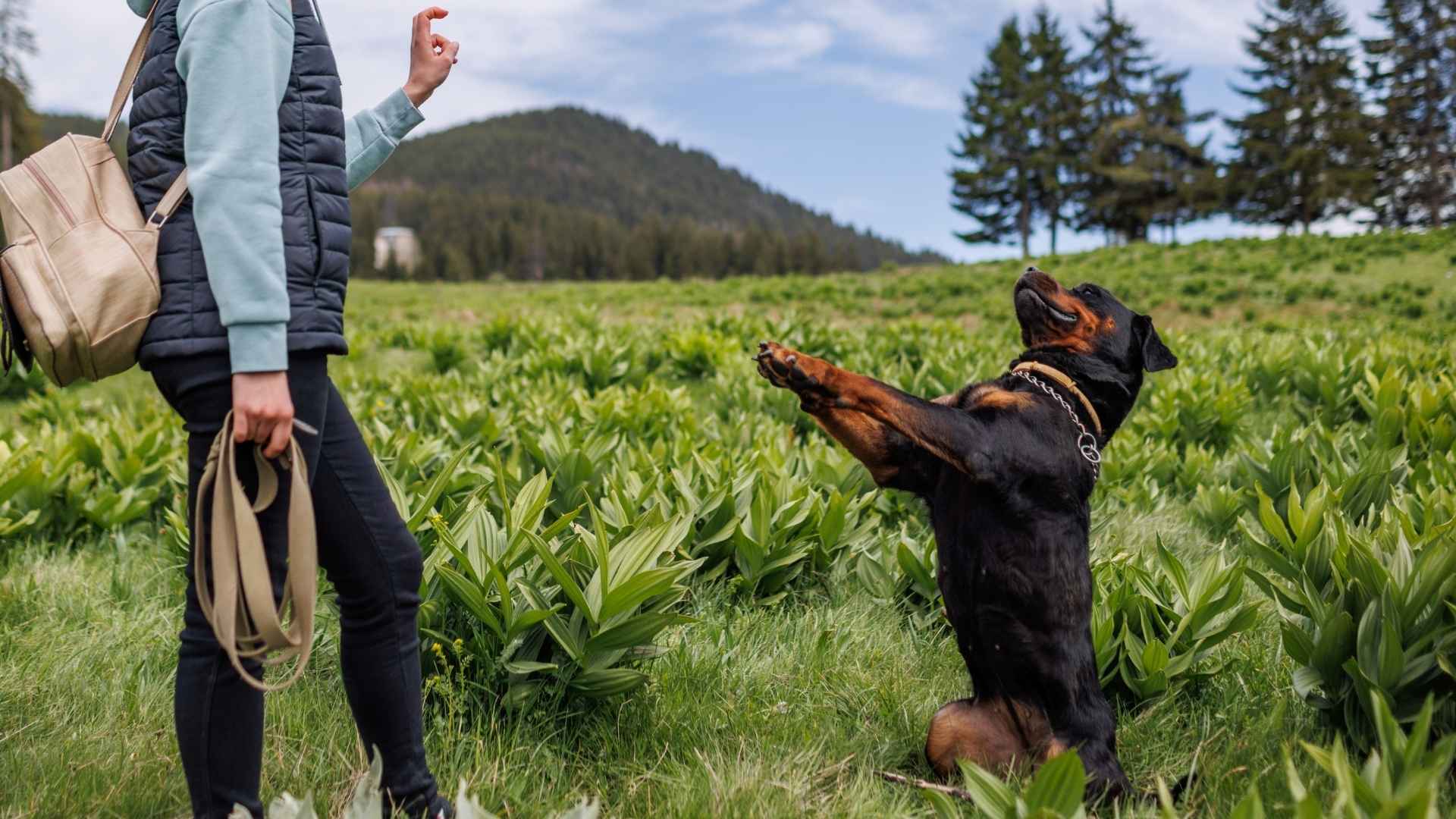Looking for a pup that’s eager to learn, quick on its paws, and always ready for a challenge? You’re barking up the right tree! Highly trainable working dog breeds are the overachievers of the canine world—intelligent, strong, and born with a job to do. Whether it’s pulling sleds, guarding your home, or performing heroic water rescues, these dogs don’t just play fetch—they mean business.
But don’t let their work ethic fool you—under all that determination, there is a loyal companion who loves to be part of the pack.
Just remember: these brilliant dogs aren’t always ideal for first-time pet parents. If you’re ready to meet the brainy besties of the dog world, stick around—we’re diving into the most trainable working dog breeds that just might steal your heart (and your socks).
Highly Trainable Working Dog Breeds
1. Golden Retriever
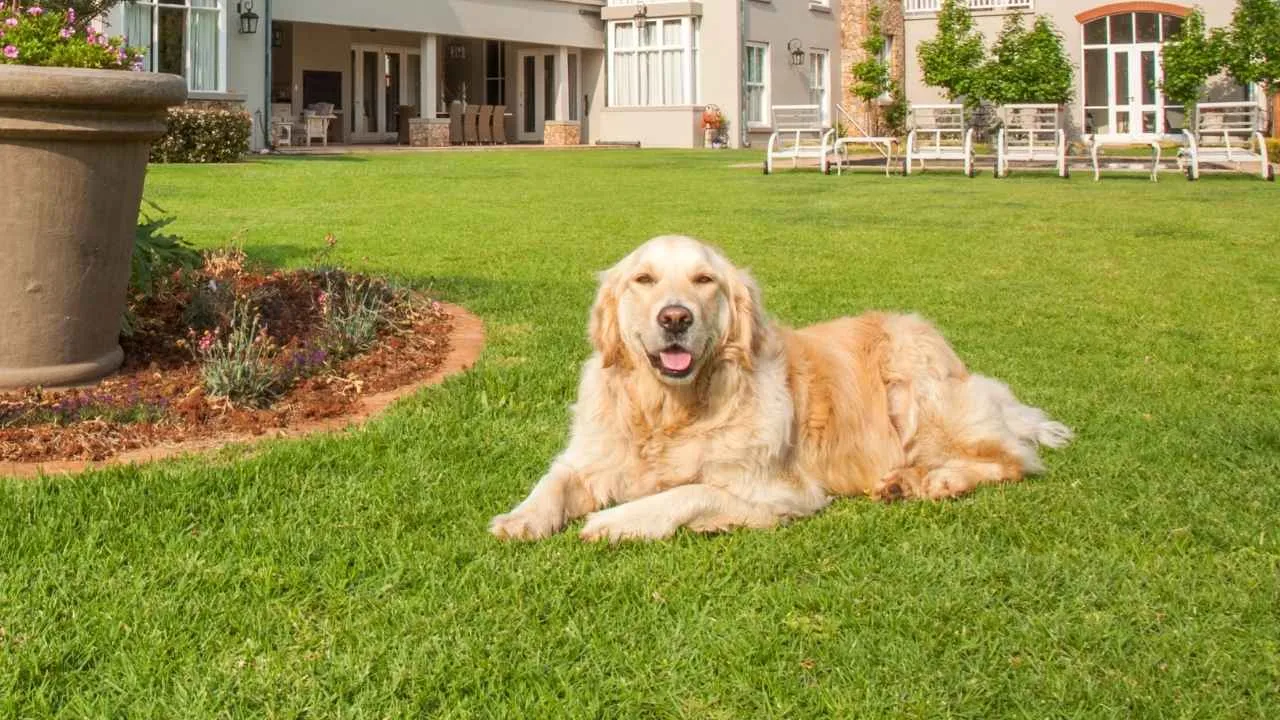
Golden Retrievers are the golden-hearted charmers of the dog world—and not just because of their glossy coats! Originally bred in 19th-century Scotland as skilled gundogs and water retrievers, these dogs were made to work side by side with hunters.
Fast-forward to today, and while most Goldens have traded the hunting fields for backyards and parks, their eagerness to please and hardworking spirit haven’t changed a bit.
Golden Retrievers are smart, energetic, and always ready for action. They’re excellent swimmers and strong athletes, and they shine in obedience, agility, and field trials.
What makes Goldens so beloved? Their temperament. They’re friendly, gentle, and fiercely loyal and have an outgoing nature – qualities that make them perfect family pets, therapy dogs, and service animals. Goldens live to make their people happy, which makes training easier (and a whole lot more fun).
Looks That Steal the Spotlight
With those intelligent, soulful eyes, broad heads, and trademark golden coats, Goldens are show-stoppers. They’re medium to large-sized pups, with males typically weighing up to 75 pounds and females a bit lighter.
Their thick double coats do shed—especially during spring and fall—so keep that brush handy! Weekly grooming usually does the trick, though daily brushing helps during heavy shedding seasons.
Petmd states Golden Retrievers live around 10–12 years, and during that time, they’ll be your biggest cheerleader, exercise buddy, and cuddle pal. They’re not known to drool much, but they sure do melt hearts.
2. Rottweiler
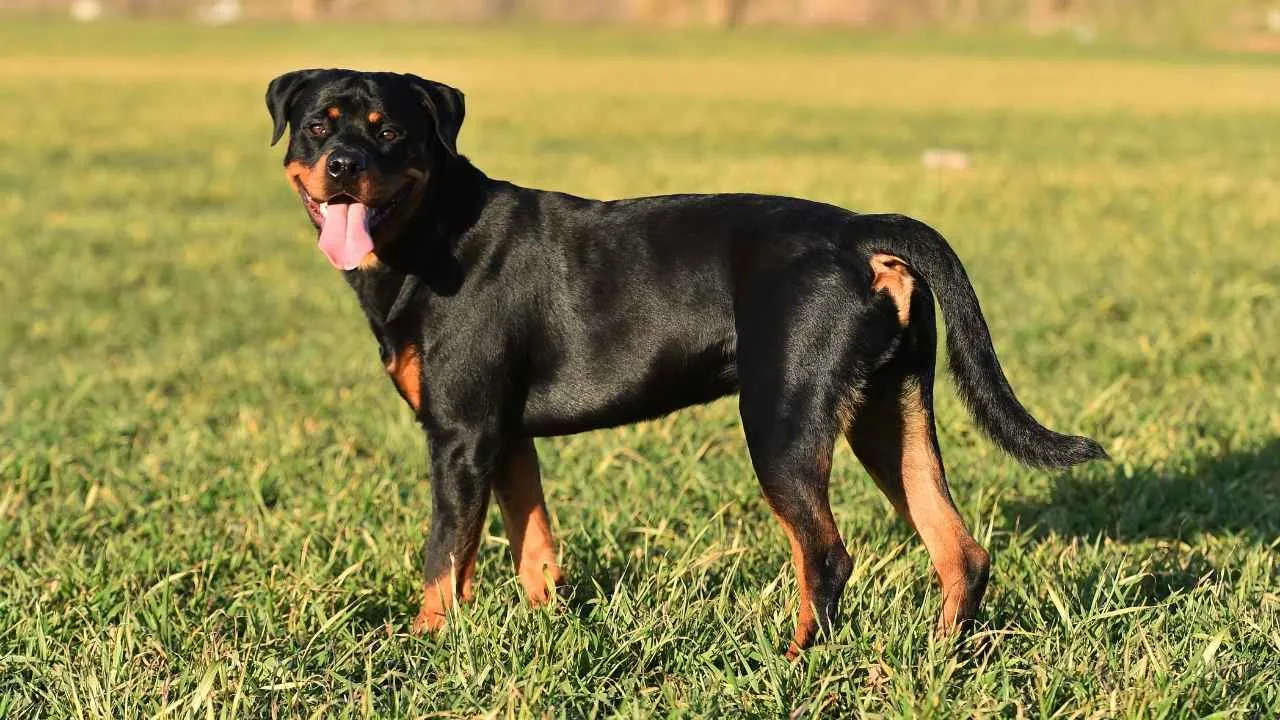
Say hello to the Rottweiler—part powerhouse, part sweetheart, and 100% loyal. This breed’s roots run deep, all the way back to ancient Rome when they worked as drover dogs, helping soldiers move cattle across long distances.
Fast-forward a few centuries, and Rotties earned a new nickname: Metzgerhund, or “Butcher’s Dog,” thanks to their job escorting butchers to market and guarding. Talk about a canine security detail!
Rottweilers were bred to think on their paws. They’re smart, strong, and brave—traits that made them perfect for herding livestock, pulling carts, and standing guard. While they are quick learners, Rotties have a stubborn streak and won’t hesitate to give you the side-eye if a task doesn’t suit their mood. Early training is key, and trust us, consistency and firm-but-loving guidance go a long way.
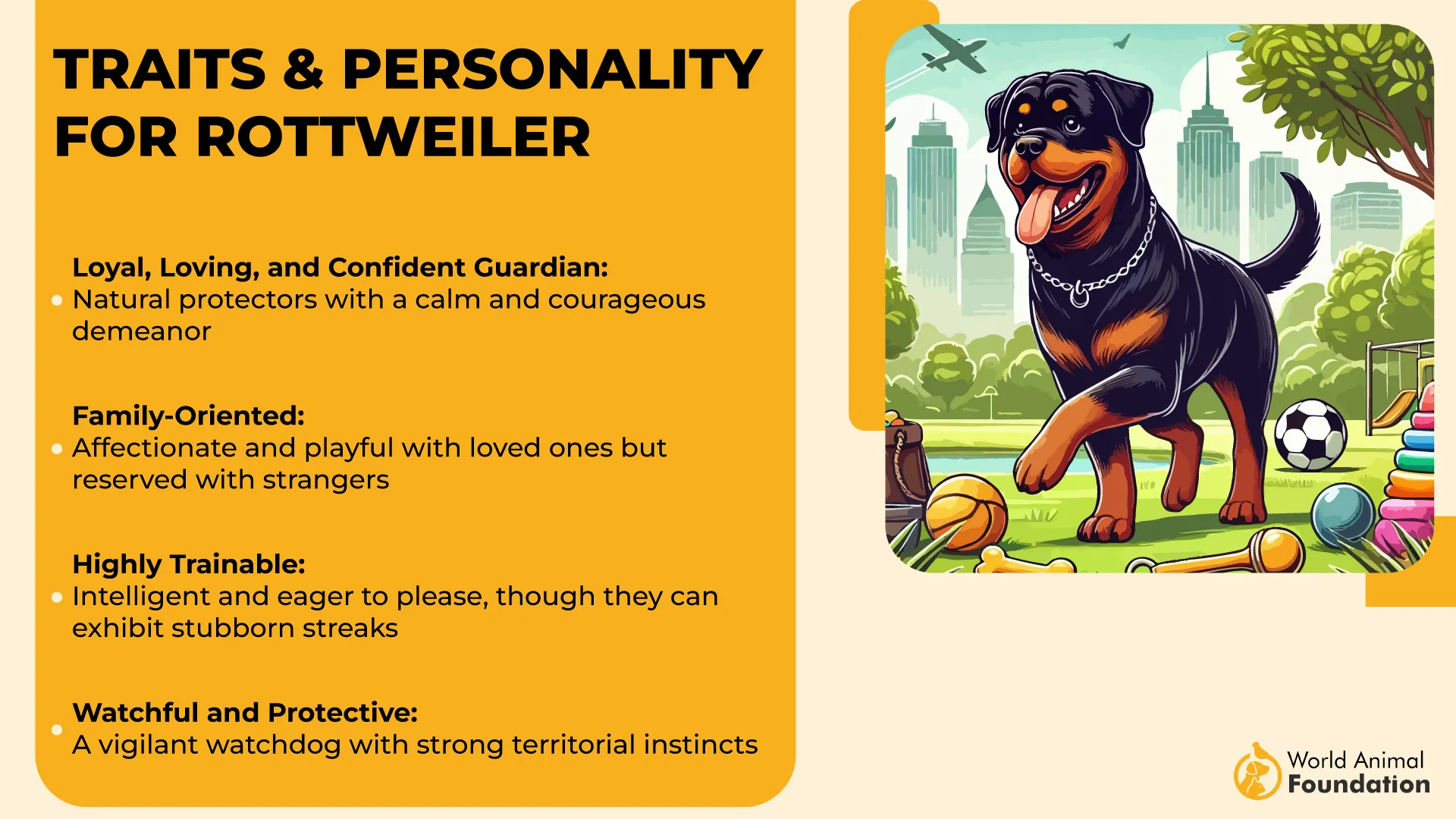
More Than Muscle
These dogs aren’t just tough—they’re multi-talented! Modern Rottweilers thrive in all kinds of roles:
Service and therapy work
Obedience and agility champions
Police and customs work
Loyal family companions
One famous therapy Rottie, Wynd, even earned an Award for Canine Excellence for helping veterans and kids. Talk about a good girl!
Protective, Not Pushy
AKC states that Rottweilers may look tough, but they’re big softies at heart—if raised right! Early socialization and puppy classes are key to managing their prey drive and to avoid issues with strangers or same-sex pets. These loyal, people-loving dogs thrive on structure, affection, and being part of the family, not stuck alone in the yard.
3. Bernese Mountain Dog
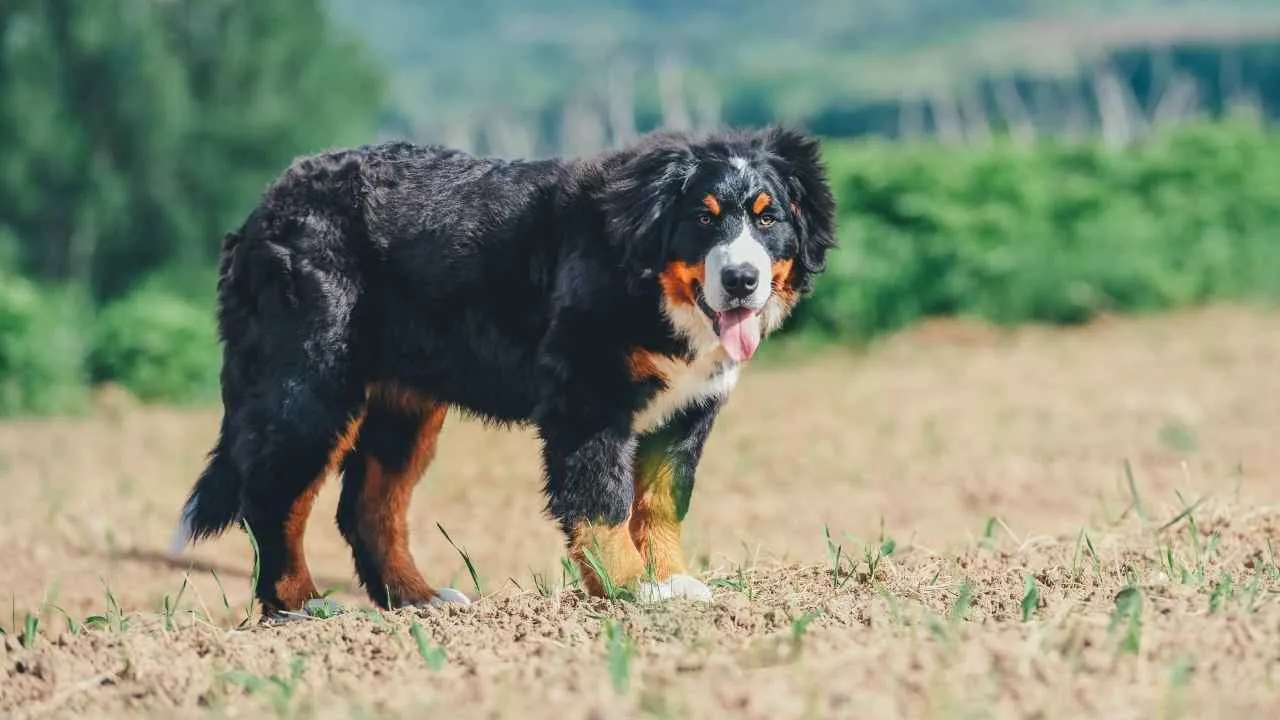
Meet the Bernese Mountain Dog—affectionately called the Berner—a gentle giant with a heart as soft as its silky, tricoloured coat. These majestic pups originally came to Switzerland over 2,000 years ago with the Romans.
Over time, they became essential farm dogs in the Swiss Alps, hauling carts, herding cattle, and protecting dairy farms that helped churn out the country’s famous chocolate and cheese. Not bad for a working dog with a goofy grin.
Berners are strong enough to pull their weight many times but have a sweet, laid-back demeanour that melts hearts. Thanks to their strength and smarts, they were once the Swiss multitaskers of the farming world—part herder, part draft dog, part snuggly guardian.
Personality That’s Bigger Than Life
WebMD states Bernese Mountain Dogs may look imposing, but they’re affectionate cuddle bugs at heart. Known for their soulful eyes and dignified expressions, they’re also wonderfully trainable and intelligent. Positive reinforcement and tasty treats work wonders during training sessions. Just be sure to teach them leash manners early—they’re strong enough to take you for a walk!
These gentle giants adore family life and usually bond closely with one favorite person. They’re kind with kids, tolerant of strangers, and friendly with other pets—just don’t expect them to bark unless it really matters. Even then, that deep bark is more bark than bite (tail wags included).
4. Boxer
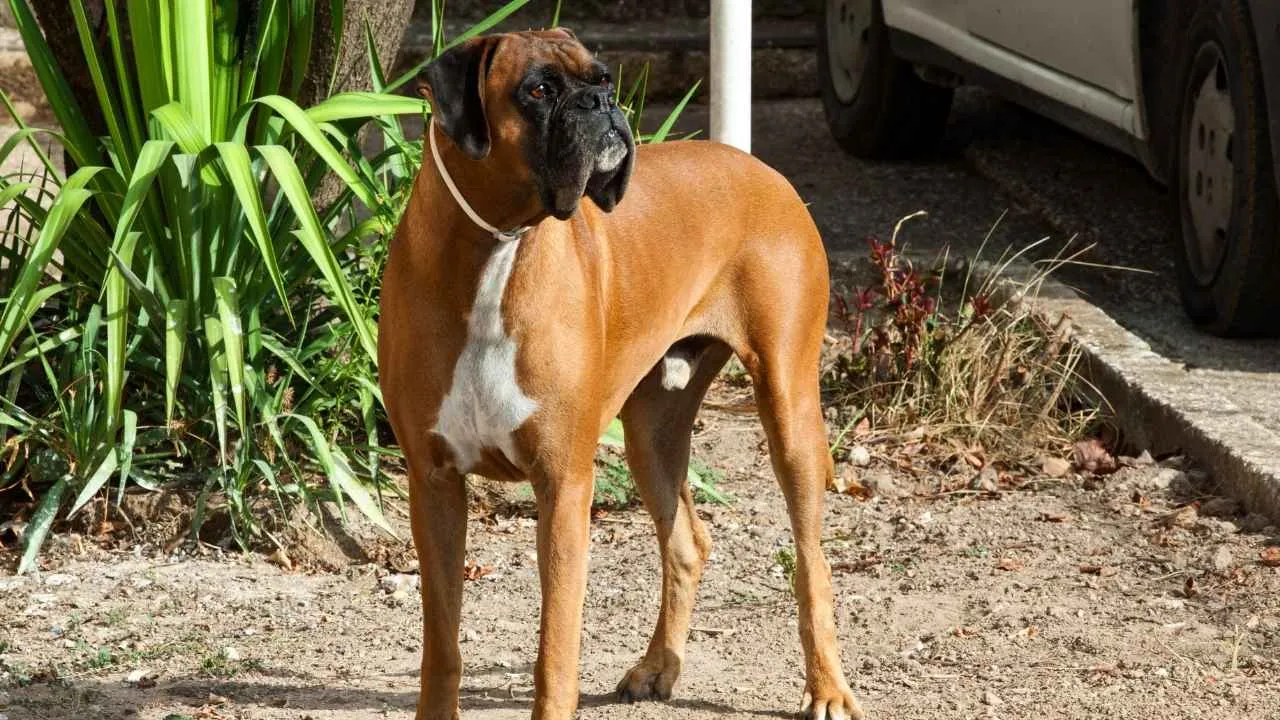
Don’t let the serious face fool you—Boxers are a bit goofy, affectionate athletes wrapped in a smooth, muscular package. Originally imported from Germany in the 1930s, these spirited pups were bred for hunting and quickly made a name for themselves in the U.S. as versatile working dogs with energy to spare.
With their sleek coats and deep chests, Boxers are the definition of fit and fabulous. They typically weigh between 65–80 pounds and stand about 21–25 inches tall. But it’s their personality—not their size—that really fills the room.
Energetic Dogs With a Whole Lot of Heart
Boxers are famously full of bounce. If your idea of a perfect day includes jogging, agility games, or a few rounds of fetch, your Boxer will be right there with you, tail-wagging and ready to go. These dogs thrive on activity and need at least 30 minutes to two hours of exercise daily to stay happy (and out of mischief!).
Just be warned: Young Boxers are expert leapers. You’ll want to teach them early that not everyone loves a surprise jump-hug!
Thankfully, Boxers are a breeze when it comes to grooming. Their short coats come in gorgeous shades like fawn, brindle, or white, often accented by black or white markings. A quick brush and an occasional bath, and they’re good to go.
Behind those expressive eyes is a sharp mind. Boxers are incredibly trainable, especially when you start young and keep things positive. They’ve done it all: from police and military work to being service dogs for people with vision impairment or epilepsy. They’re intelligent, loyal, and love having a job to do.
The Family Clown With a Noble Past
Boxers may have a working dog background, but don’t be surprised when they turn into cuddly goofballs at home. They’re playful, affectionate, and happiest when surrounded by their people. Though they’re friendly with other dogs and strangers, they shine brightest in a loving home where they can channel all that enthusiasm into games, cuddles, and bonding.
5. Bullmastiff
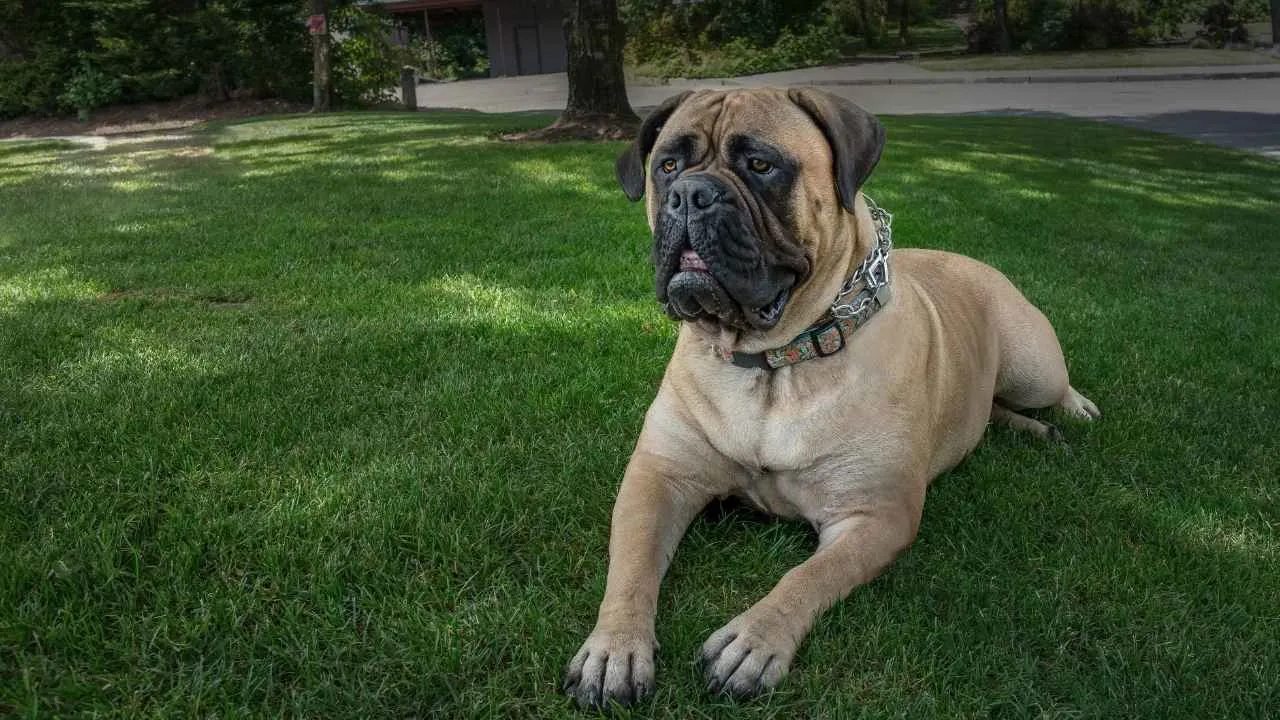
Meet the Bullmastiff—your ultimate gentle giant with a heart as strong as its build. Originally bred in 19th-century England, this impressive breed was designed to guard grand estates and chase off poachers.
Bullmastiffs are calm, affectionate companions who love their families (especially the kiddos). They’re typically mild-mannered and not prone to barking fits, but that doesn’t mean they won’t step up as watchful protectors when needed.
Bullmastiffs enjoy their daily walks and outdoor play sessions, but they’re not built for high-speed jogging. Moderate exercise is perfect—just enough to keep their bodies fit and their minds sharp. And yes, secure fencing is a must. These loyal guard dogs take their territory seriously, and you’ll want to keep them (and the neighbourhood squirrels) safe.
While they may look like couch potatoes at times, Bullmastiffs crave mental stimulation. Boredom leads to mischief! Keep their minds busy with scent games, puzzle toys, or basic agility and obedience training. They’re surprisingly talented at things like tracking and rally once you get them engaged.
6. Chinook
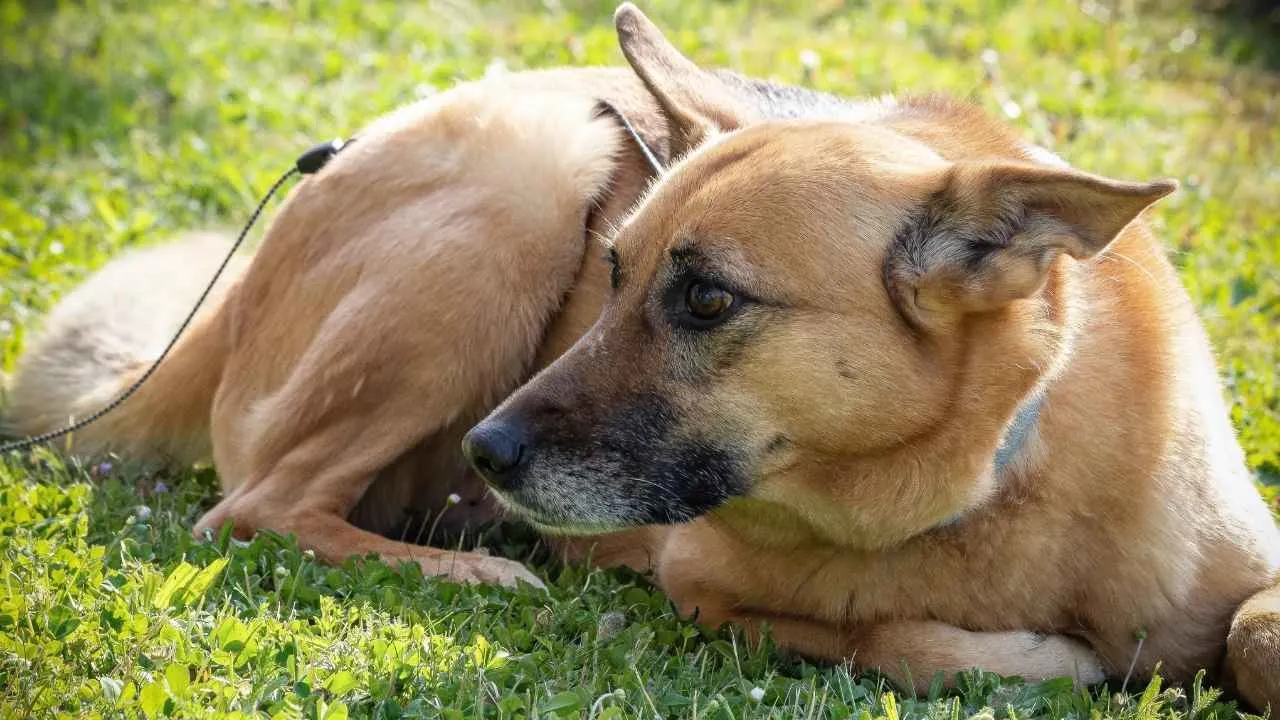
Tucked away in the snowy history of New Hampshire is one of the rarest dog breeds in the world—the Chinook. Bred in the early 1900s by explorer Arthur Walden, this adventurous pup came to life when a Siberian Husky met a mastiff-type dog. The goal? A strong, intelligent sled dog with the stamina of a racer and the heart of an excellent companion. Mission accomplished!
Chinooks may have sleddog roots, but don’t let that fool you—they’re just as content curling up at home as they are racing through snow. Their double coat keeps them warm in colder climates, while their muscular bodies, webbed feet, and sabre-like tails hint at their hardworking heritage. Though calm around the house, these pups are packed with energy and ready for any adventure you throw their way.
As noted by Hillspet, Chinooks are highly intelligent and eager to please and a fairly trainable breed—though a little independence can peek through. Start early (around 8–12 weeks), use positive reinforcement, and keep things fun. High-value treats go a long way with this breed, especially when they nail a new command.
What really makes the Chinook shine is their sweet, devoted temperament. These dogs are famously patient with kids, affectionate with their families, and gentle in their ways. They bond deeply with their people and often become your loyal shadows—whether you’re hiking, biking, boating, or just doing chores in the backyard.
Chinooks are happiest when they’ve got a job to do. Their resume is impressive: sledging, skijoring, bikejoring, cart pulling, agility, obedience, rally, tracking—you name it. If it keeps them moving and mentally engaged, they’re in!
Thanks to their thick coat, Chinooks need regular grooming—weekly brushing does the trick most of the year. But during heavy shedding seasons (hello, spring and fall), bump it up to twice a week to keep your home from becoming a fur zone. Regular grooming also helps maintain healthy skin and coat while giving you some bonding time.
7. German Pinscher
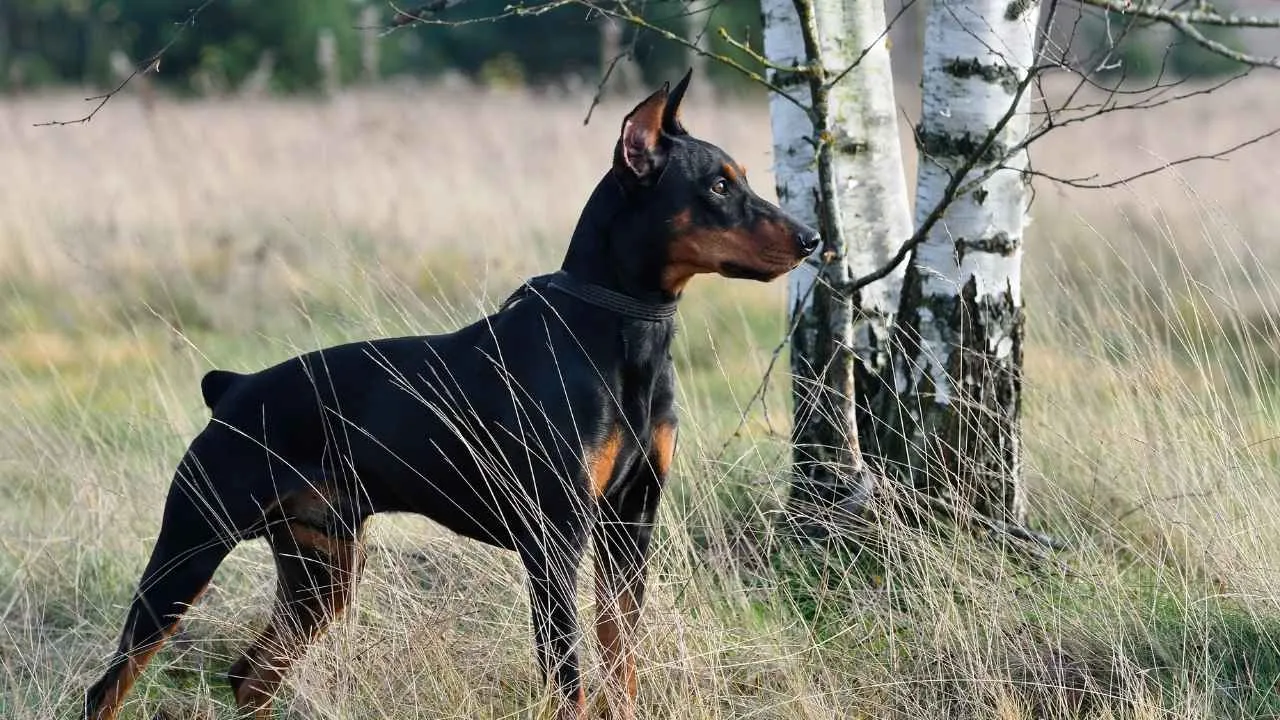
Sleek, shiny, and full of spirit, the German Pinscher is a true head-turner. This elegant breed hails from Germany, where it was originally bred back in the 1600s to chase down rodents and guard farms. Think of them as the aristocrats of the working dog world—stylish, absolutely determined, and a smart dog breed.
German Pinschers are medium-sized dynamos, standing about 17–20 inches tall and weighing in at 25–45 pounds. They’re often mistaken for their larger cousin, the Doberman, but they’re a breed all their own—compact, agile, and endlessly alert. These dogs are sharp as a tack and know it. They’re the kind of pup who’ll master a trick before you’ve finished your coffee… but only if they feel like it.
This breed comes with a serious energy boost. German Pinschers crave action, adventure, and anything that puts their athleticism and intelligence to the test. If they’re not mentally and physically challenged, they’ll get creative—and not always in ways you’ll appreciate (hello, chewed shoes).
Favourite activities include:
High-energy games and puzzle toys
Long walks, runs, or play sessions in the yard
Dog sports like rally, agility, and tracking
Loyal companions—With a Dash of Independence
Once a German Pinscher loves you, it’s forever! These playful, affectionate pups are all about family time—but they’re not handing out hugs to strangers. They warm up slowly and prefer familiar faces. As for kids? They’re best buddies with older, respectful ones who know when to give them a little space.
Smart and slightly stubborn, German Pinschers thrive under a firm, consistent training routine. They respond brilliantly to positive reinforcement (yes to treats and praise!), but get bored quickly with repetition. Keep sessions fun and short, and always end on a high note.
What to Know Before You Fall in Love
While these dogs are amazing companions, they’re not the best match for first-time dog owners. They do best with confident, experienced handlers who understand working breeds. Give them the structure, affection, and daily exercise they need, and they’ll reward you with loyalty, protection, and endless entertainment.
Conclusion
In the world of highly trainable and working dog breeds, it’s no surprise that certain breeds like the Border Collie, German Shepherd dog , and Australian Cattle Dog consistently top the charts. These intelligent breeds thrive on learning new skills, tackling complex tasks, and working closely with their humans—whether it’s to protect sheep, assist in military roles, or simply master complex tricks at home.
From herding dogs like the Australian Shepherd and Shetland Sheepdog to small dogs like the sharp and spunky Miniature Schnauzer, the most trainable dog breeds come in all shapes and sizes. What they share is a strong desire to please, boundless energy, and an eager spirit that makes them shine in roles that challenge both body and mind. Breeds like the Doberman Pinscher, Great Dane, and Siberian Husky shine when given a purpose, especially when paired with proper training and early socialization.
If you’re looking for a loyal companion who learns quickly, thrives with purpose, and brings a spark to everyday life, choosing from these most trainable breeds—whether it’s a playful Poodle, a focused Blue Heeler, or an English Springer Spaniel with its butterfly-like ears—is a great way to find a partner who’s not just a pet, but part of the team.


